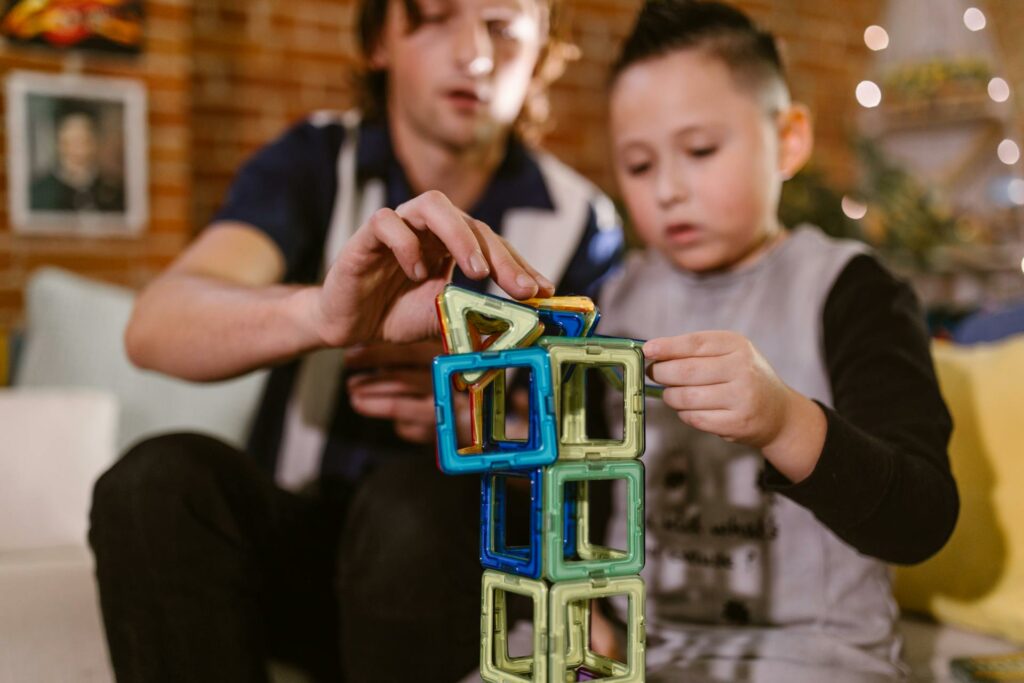Homeschooling provides an opportunity to tailor education to the needs, interests, and pace of each child. One highly effective and engaging approach to consider is play-based learning. This method transforms lessons into immersive, hands-on experiences that inspire curiosity, creativity, and a love for learning. In this blog, we will explore what play-based learning is, how to incorporate it into your homeschooling routine, and why it is so beneficial for children.
What is Play-Based Learning?
Play-based learning is an educational approach that uses play as the primary vehicle for teaching and learning. It allows children to explore, discover, and solve problems in a relaxed and joyful environment. This type of learning encourages active engagement rather than passive reception of information.
The concept is rooted in the idea that play is a natural and vital part of childhood development. Through play, children develop cognitive, physical, social, and emotional skills. Structured or unstructured, play-based learning bridges fun with education, making lessons more memorable and impactful.
Benefits of Play-Based Learning
1. Encourage Creativity and Imagination:
Play-based learning allows children to explore ideas freely, fostering creativity and encouraging imaginative thinking.
2. Improves Social Skills:
Group play activities teach children how to collaborate, share, and resolve conflicts.
3. Enhances Problem-Solving Abilities:
Whether it’s building a tower with blocks or role-playing as a shopkeeper, play often involves overcoming challenges and finding solutions.
4. Strengthens Emotional Resilience:
Through role-play and other activities, children learn to express their emotions and understand others’ perspectives.
5. Makes Learning Fun and Engaging:
By integrating play into lessons, children are more likely to stay motivated and retain information.
Practical Tips for Incorporating Play-Based Learning into Homeschooling
1. Create a Flexible Schedule:
By integrating play into lessons, children are more likely to stay motivated and retain information.
2. Designate a Play Area:
Set up a dedicated space with materials like blocks, art supplies, puzzles, or even a sandbox. This helps keep the environment organised and stimulates creativity.
3. Use Everyday Objects as Learning Tools:
Common household items like measuring cups, spoons, and bowls can be used for math or science experiments.
4. Follow the Child’s Interests:
Observe what excites and intrigues your child, then use that as a starting point for play-based activities.
5. Mix Free Play with Guided Play:
While free play encourages independence, guided play allows you to subtly steer the activity toward specific learning objectives.
Methods of Incorporating Play-Based Learning
1. Dramatic Play:
Set up a mini supermarket or a pretend doctor’s office. This method helps develop math skills (counting money, calculating totals) and social skills (role-playing as a customer and shopkeeper).
2. Sensory Play:
Activities like playing with sand, water, or slime engage the senses while teaching concepts like volume, texture, and temperature.
3. Building and Construction:
Use building blocks, LEGO, or natural materials like sticks and stones to teach engineering principles and spatial awareness.
4. Outdoor Exploration:
Nature walks, scavenger hunts, or gardening can teach science concepts like plant biology and ecosystems.
5. Storytelling and Puppet Shows:
Encourage children to create their own stories, improving their language skills and boosting confidence in self-expression.
6. Music and Movement:
Singing, dancing, or creating rhythms with homemade instruments combines physical activity with learning about patterns and coordination.
Examples of Play-Based Learning Activities:
- Math Games with Dice: Teach addition or subtraction through dice games, where children roll and calculate totals.
- Art Projects with a Theme: Ask your child to create a collage or painting based on a storybook you’ve read together.
- Science Experiments: Create a simple volcano using baking soda and vinegar to demonstrate chemical reactions.
- Treasure Hunts: Hide objects and provide clues for your child to find them, teaching problem-solving and critical thinking.
Why Choose Play-Based Learning for Homeschooling?
Children learn best when they are actively involved and having fun. Play-based learning not only helps achieve academic goals but also nurtures holistic development. This approach aligns with the core values of creativity, individuality, and joy in learning.
Home schoolers, in particular, can benefit from play-based methods as they provide the flexibility to blend education with play in a way that suits their child’s unique needs.
Incorporating play-based learning into your homeschooling routine is a step toward creating a dynamic, fulfilling educational experience. For more ideas on innovative teaching methods, visit Open Minds Campus.
FAQ
What is the meaning of play-based learning?
Play-based learning is an educational method where play is used as the main medium for teaching. It encourages children to explore, discover, and learn in a fun and interactive way.
What is an example of a play-based learning activity?
An example could be creating a treasure hunt where children solve clues to find hidden objects, developing their problem-solving and critical-thinking skills.
What is the play method of learning?
The play method involves teaching children through hands-on activities and interactive experiences. It emphasizes active participation, exploration, and creativity.
What is an example of a play-based curriculum?
A play-based curriculum might include daily activities like storytelling, role-playing, building structures with blocks, and nature exploration, all designed to teach specific skills through enjoyable and engaging methods.



